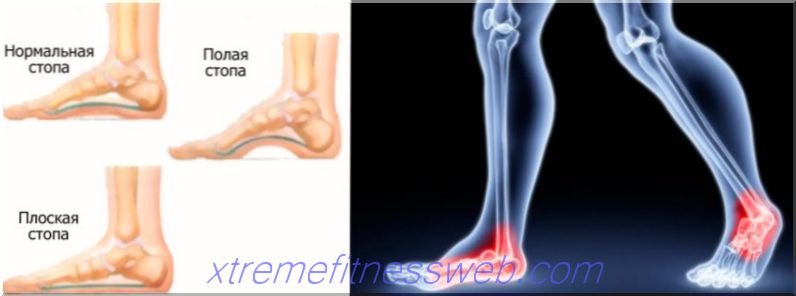- What is protein-carbohydrate alternation
- Is this a really effective diet?
- How to alternate carbohydrates
- How to calculate BEECH for weight loss
- BEECH for weight maintenance
- Four secrets of BEACH
- Conclusion

Recent studies prove that protein-carbohydrate alternation is no more promising than a normal calorie-deficient diet. But scientists did not take into account a couple of facts - athletes and ordinary people who lose weight by the summer organize their training process a little differently and recover, and the diet of a person who gets rid of the last 3-5 kg will be low-carb in any case. Protein-carbohydrate alternation will help to avoid typical problems on drying - slowing down metabolism, losing motivation for training too quickly, and, as a result, disruptions and "junkies". Protein-carbohydrate alternation has several names in everyday life. This scheme is called the cyclic diet, the UD-2 diet, or BEECH.
Content
- 1 What is protein-carbohydrate alternation
- 1.1 High Carb Days
- 1.2 Low Carb Days
- 1.3 Carbohydrate-Free Days
- 2 This is a really effective diet. "> 2.1. Is protein-carbohydrate alternation suitable for me?
- 6.1 Do I need to change my weekly training plan?
- 7.1 calculation of the amount of fluid
- 7.2 A rational approach to carbohydrates
- 7.3 Watch for Calorie Deficiency
What is protein-carbohydrate alternation

Protein-carbohydrate alternation appeared in the world of bodybuilding. Diets of such a plan were designed to overcome the main problem - a gradually slowing metabolism, and the disgusting health of athletes on drying. Everyone who tried to withstand classical drying for more than 3-4 weeks knows what it is about - loss of motivation for training, constant weakness, irritability and nervousness.
Important: adaptation is a typical consequence of all diets. People who try to lose weight spend many months on a calorie deficit, so their bodies get rid of fat more difficult than those who just lose weight one time and then maintain weight. Bodybuilders, fitness enthusiasts, striving for a clear relief - a kind of risk group. After all, they have been trying for years to achieve the desired shape, and are not always competently approaching recovery after a long diet. Therefore, with each new attempt to make a relief, it becomes more and more difficult.
Protein-carbohydrate alternation is an attempt by nutritionists to overcome the constant "vicious circle" of adaptation. Those who use this technique do not have time to get used to low-carb. Their thyroid hormone levels remain normal, and weight loss does not slow down due to the body’s addiction.
For information: In professional bodybuilding, a strategy similar to protein-carbohydrate alternation is often used. But all macronutrients are cycled, not just carbohydrates. On training days, the amount of carbohydrates rises a little, and the calorie deficit is built by fat. It gives energy and good health. On days of rest, or when the athlete is training easily, carbohydrates are cut and fats are raised to “restart” the hormonal system.
High carb days

On high carbohydrate days, hard training is fine-tuned. If the athlete is on the bodybuilding split, it is advisable for him to train his legs or back on this day. Those involved in power sports - just arrange a hard training.
High carbohydrates are about 4-5 g for men and 4 for women. Sometimes it is recommended to take 3 g per load and 1 g on a normal day of the cycle, but this is justified only if the athlete does not “dry up” at all and after a month he will be on stage. Fans usually don't need such low numbers. Their body is not so adapted to the "dryers" to comply with a strict plan.
Low carb days
Here the opinions of nutritionists diverged. Many domestic bodybuilders and their diet gurus believe that you should eat no more than 1 g of carbohydrates on such a day. Others say it’s not advisable to drop below 2 g. In fact, it depends on the style of training. If we have before us an ordinary fitness lover who does not perform more than 12 working approaches for a large muscle group, and cannot boast of stable and impressive strength indicators, his main task is to keep the numbers moderately low. If we have an athlete of a decent level, or who is engaged in crossfit, powerlifting or weightlifting, lowering carbohydrates below 2 g does not make sense. In such athletes, the deficit will be easier to achieve by maintaining normal intensity of training than due to the huge deficit of carbohydrates.
Carbohydrate-free days
On such days, less than 30 g of digestible carbohydrates is recommended. This is necessary to "drain the water" before weighing, a scene or a responsible photo shoot. Not all nutritionists have a normal "carbohydrate pit." In professional bodybuilding, she is arranged a week before entering the stage so that excess fluid is gone and the relief appears.
There is no point in observing carbohydrate-free days without a sufficient degree of dryness. Typically, such things are practiced by men whose fat percentage is below 8 and women, 12% “drier”. In all other cases, this is a little defensible measure. Even if you “drain” all the water, the relief will still not appear, because there is too much fat.
Is this a really effective diet?

If you trust Lyle MacDonald's research, this is the best diet available. It allows you to maintain high compliance, that is, to properly tolerate restrictions, actively train, keep your muscle mass at a level decent for a diet, and losing fat is easier and easier than with a regular low-carb diet.
Wait, what about balanced plans with a small calorie deficit?> Is protein-carbohydrate rotation suitable for me

BEACH is definitely a scheme for those who practice strength training. If the training style is aerobic, and the athlete, for example, runs a long distance, or attends some classes of dancing or martial arts, he should do without cycling. Such athletes have a higher need for carbohydrates, and adjusting the cycle to training will not work. Usually they "dry" perfectly on diets with a small deficiency of calories and carbohydrates.
Protein-carbohydrate alternation is suitable for those who have gained muscle mass and want to dry out. But it is a too redundant method for a person who bought a subscription to the hall yesterday and now seeks to get rid of extra pounds with the help of physical exercises.
BEECH is suitable for those who are disciplined, can consider the number of macronutrients, cook for themselves in advance, and provide for different social situations. This is a diet of those who have been counting macronutrients for some time, understand what is what, and how to cut back, for example, carbohydrates, while preparing some ordinary dish.
Important: this method has a negative effect on the mental health of those who have an eating disorder or similar problems. It can provoke an exacerbation of anorexia or bulimia. If there is such a problem format, it is better to abandon cyclic diets.
How to alternate carbohydrates

Before you start a cyclic diet, you need to find out the average calorie intake, which you should strive for, and the minimum average calorie intake per day. These numbers will help to avoid failure, not to overeat, and to remain in the zone of calorie deficiency, even if you are loaded with carbohydrates regularly.
First, you need to calculate your basal metabolism. You can find it by the formula BMR = 66 + (6.23 x weight in pounds) + (12.7 x height in inches) - (6.8 x age in years). In no case should you go below this figure.
Further, you can use the coefficients, but in modern life, and even for a training person, they will not give the desired result.
Therefore, it is necessary:
- Take a smartphone and install a pedometer;
- View your activity for the week;
- Ideally - control calorie consumption using smart watches;
- If you go through at least 10, 000 steps and exercise, feel free to multiply BMR by 1.55;
- If you don’t pass, but exercise, your number is 1, 375;
- Multiple BMR by 1, 2 can be those who do not train, but 1.7 and 1, 9, respectively, professional bodybuilding and crossfit athletes, and people who are preparing for these types of competitions
Home gymnastics with a lack of movement do not make it possible to use a high coefficient. Multiplying BMR by a coefficient, you will receive your figures for weight loss.
How to calculate BEECH for weight loss

Losing weight without a calorie deficit does not happen. But it happens both due to fat and due to muscles. Therefore, we do not need a huge deficit. As well as lack of protein. The less protein a person eats, the greater the chance that his diet will lead to a decrease in muscle mass, a slowdown in metabolism, and an increase in cortisol levels. Then it will be difficult to lose weight.
For starters, the numbers can be as follows:
- 2 g of protein per 1 kg of body weight;
- 1-2 g of carbohydrates on a low carb day;
- 3-5 g of carbohydrates on a high-carb day;
- 1.2-1.5 g of fat every day. Less is taken on high-carb days.
Older versions of the diet encouraged athletes to go down to half a gram of fat per kilogram of body weight, but this is not a good strategy, given that athletes can greatly slow down metabolism and get an increased feeling of hunger due to an increase in cortisol levels.
Usually, these numbers are enough to confidently “dry” for several months. But still with BUCH they do not recommend delaying more than 12 weeks.
BEECH for weight maintenance

Protein-carbohydrate alternation is well suited for those who need to smoothly exit the diet and tune in to support, or for those who quickly adapt to higher calories and begin to gain fat mass.
Training and BEECH on supporting numbers will help preserve the muscular texture after drying, and an excellent appearance.
The support calculations are as follows:
- From supporting calories, half are proteins;
- The rest - in half between fats and carbohydrates;
- Carbohydrates on a high day 50%, on a low - 25%
How it differs from regular nutrition "> How to alternate carbohydrates and build BEECH

Usually, professional or simply more experienced athletes adjust the BEAM for a training split, increasing carbohydrates on days of training legs or back.
But for lovers, the following layout is suitable:
- Day 1 - Low Carbohydrates
- Day 2 - Low
- Day 3 - low or “pit”, i.e. no carbohydrate day
- Days 4 and 5 - High Carbohydrates
- Days 6 and 7 are low
This layout is not the most successful, as it involves a very long low-carb period. For those who practice high-intensity cardio and exercise really hard, this can be overkill. It makes sense for such people to do 3 day low-carb cycles, and load every 4 days.
Schemes may be different. Many people practice a single load in 10-14 days at 2 g of carbohydrates per 1 kg of body weight on a low-carb cycle. This helps to dry out if you are preparing for a competition, and loading only replenishes glycogen once and increases diet tolerance.
The 3 to 1 diet cycle looks like this
- Day 1 Low;
- Day 2 low;
- Day 3 low;
- Day 4 high;
- Day 5 low;
- Day 6 Low;
- Day 7 - low;
- Day 1 - High, etc.
In this case, the cycle scheme is not tied to the day of the week, you just need to alternate 3 days of low carbohydrates and 1 day of high ones.
Do I need to change my weekly training plan?
Here the advice of experienced begin to resemble mutually exclusive paragraphs. Some are actively promoting leg or back workouts on a high-carb day. So all carbohydrates will go "to business", to ensure hard work of the muscles, and maintain physical activity. Others say they just stick to their regular program. Here you will never know what to do until you try.
But what definitely doesn’t need to be changed is your usual style, that is, if you are used to strength training in the mid-repetitive or low repetitive mode, you do not need to go into multiset, and strive to actively “fill in” cardio hours. Training should remain more or less familiar in style and content.
Four secrets of BEACH

A cyclic diet may be a bit unusual. Some people think that it does not work at all. The reason is that during a cyclic diet, fluid retention and its “movement” in the body become quite serious. Therefore, a cyclic diet should not upset lovers to weigh themselves every day. These 4 secrets will help you to adequately sit on this diet and evaluate your progress.
Calculation of the amount of fluid
1 g of carbohydrates binds about four times more water than it weighs. This means that after a carbohydrate load it will be quite normal to hold about 400-500 g of water, and increase its weight. This does not mean that you quickly recovered by eating rice, or some other carbohydrate product. And this all the more does not mean that the diet has stopped working.
Fluid retention is also quite typical after hard training of the legs, or physical overload associated with an excess of high-intensity cardio. If all weight loss is planned before entering the bodybuilding scene or before a responsible photo shoot, you should actively "drain the water" in the last few days, and before that - do not worry about fluid retention.
A rational approach to carbohydrates

We will be frank. Only bodybuilding professionals who are on a pharmaceutical support and work hard are good looking and loaded with ice cream and chocolate. For an ordinary amateur, 3-4 times a week wandering into the gym for an hour and a half, such luxury does not shine.
Yes, if you do not want to "drain" the swelling for several days, and walk after loading with eyes-clicks, you should abandon the very idea of loading "dirty" carbohydrates.
Rationally use the following products:
- Pasta and pasta;
- Sweet potato yam;
- Ordinary potatoes;
- Rice of all kinds
Fruits on the load are eaten only by those who normally tolerate them. It is better to leave sugar for the future, and eat it only during mass, and for health - minimize it in the diet even then.
Reduce “fat load” on high carbohydrate days
Many people don’t “fall in calories” on this diet simply because they eat too much fat. They must learn to reduce their number on a diet in order to eat more rationally, and create a deficiency.
In addition, the less fat you eat, the easier the food is absorbed, and the better the gastrointestinal tract tolerates all these returbations with cycles. Therefore, monitor the ratio of proteins, fats and carbohydrates, and eat fatty foods not on carbohydrate days.
Watch out for calorie deficiency
Sadly, no manipulations can save fat if the main reason for its “appearance” is a banal lack of calorie deficiency. On this just beginners of diets "fall". They simply alternate as they like, and then wait for weight loss, although there are no physiological prerequisites for it and cannot be.
A banal diary of food and a record of everything you eat will greatly help in maintaining a calorie deficit.
Conclusion
Sitting on the BEECH, we must remember that this is not a panacea. He does not eliminate the need to consider KBZhU, just makes this process more complicated. For beginners, BEECH is not suitable for this reason. And the alternation scheme can be psychologically difficult, because it would be better if the person who will strive to comply with it, nevertheless, will not be a beginner of diets.
You can alternate proteins, fats and carbohydrates and lose weight for several months, and more specifically, no more than three. Then you can go to support, either with the usual style of food, or with alternation.







